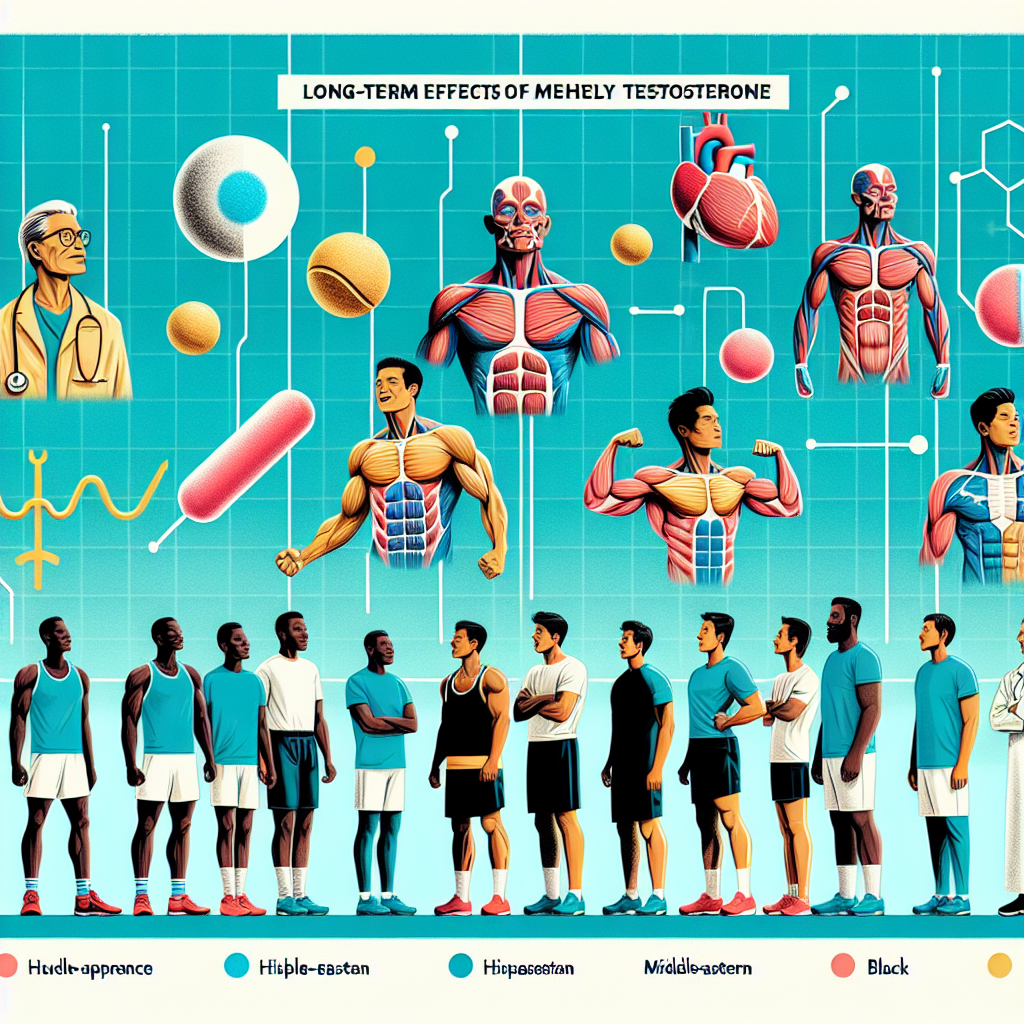-
Table of Contents
- The Long-Term Effects of Methyltestosterone on Athletes’ Bodies
- Pharmacokinetics and Pharmacodynamics of Methyltestosterone
- Short-Term Effects of Methyltestosterone on Athletes
- Long-Term Effects of Methyltestosterone on Athletes’ Bodies
- The Importance of Responsible Use and Monitoring
- Expert Comments
- References
The Long-Term Effects of Methyltestosterone on Athletes’ Bodies
Methyltestosterone, also known as 17α-methyltestosterone, is a synthetic androgenic-anabolic steroid (AAS) that has been used by athletes for decades to enhance their performance. It was first developed in the 1930s and has since been banned by most sports organizations due to its potential for abuse and adverse health effects. However, despite its illegality, some athletes continue to use methyltestosterone in hopes of gaining a competitive edge. In this article, we will explore the long-term effects of methyltestosterone on athletes’ bodies and the potential risks associated with its use.
Pharmacokinetics and Pharmacodynamics of Methyltestosterone
Before delving into the long-term effects of methyltestosterone, it is important to understand its pharmacokinetics and pharmacodynamics. Methyltestosterone is a synthetic derivative of testosterone, the primary male sex hormone. It is available in oral and injectable forms and is typically taken in cycles, with periods of use followed by periods of abstinence. The half-life of methyltestosterone is approximately 4-6 hours, meaning it is quickly metabolized and eliminated from the body.
When taken, methyltestosterone binds to androgen receptors in the body, promoting protein synthesis and increasing muscle mass and strength. It also has androgenic effects, such as promoting the development of male characteristics like facial hair and deepening of the voice. However, these effects are not limited to just males, as females who use methyltestosterone may also experience these changes.
Short-Term Effects of Methyltestosterone on Athletes
The short-term effects of methyltestosterone on athletes are well-documented. It is known to increase muscle mass, strength, and endurance, making it a popular choice among athletes looking to improve their performance. However, these effects are temporary and can quickly dissipate once the drug is discontinued. Additionally, methyltestosterone can also cause a range of adverse effects, including:
- Acne
- Hair loss
- Aggression and irritability
- Liver damage
- High blood pressure
- Changes in cholesterol levels
- Gynecomastia (enlarged breast tissue in males)
These short-term effects can be concerning, but it is the long-term effects that are of particular interest when it comes to the use of methyltestosterone in athletes.
Long-Term Effects of Methyltestosterone on Athletes’ Bodies
The long-term effects of methyltestosterone on athletes’ bodies are not as well-studied as the short-term effects. This is due to the fact that most studies on AAS use in athletes have focused on short-term effects, and long-term studies are difficult to conduct due to ethical concerns. However, some studies have shed light on the potential long-term effects of methyltestosterone on athletes.
One study published in the Journal of Clinical Endocrinology and Metabolism (Kanayama et al. 2010) followed a group of male weightlifters who had used AAS, including methyltestosterone, for an average of 9 years. The study found that these individuals had significantly lower levels of testosterone and higher levels of estrogen compared to non-users. They also had a higher prevalence of cardiovascular risk factors, such as high blood pressure and abnormal cholesterol levels.
Another study published in the Journal of the American Medical Association (Bhasin et al. 2016) looked at the long-term effects of testosterone therapy in older men. While this study did not specifically focus on methyltestosterone, it is worth noting that testosterone therapy has similar effects on the body as methyltestosterone. The study found that men who received testosterone therapy had a higher risk of cardiovascular events, such as heart attack and stroke, compared to those who did not receive the therapy.
These studies suggest that long-term use of methyltestosterone may have detrimental effects on athletes’ bodies, including changes in hormone levels and increased risk of cardiovascular events. However, more research is needed to fully understand the long-term effects of methyltestosterone on athletes.
The Importance of Responsible Use and Monitoring
It is clear that the use of methyltestosterone and other AAS can have serious consequences on athletes’ bodies, both in the short and long term. As such, it is crucial for athletes to use these substances responsibly and under the supervision of a healthcare professional. Regular monitoring of hormone levels and overall health is also essential to detect any potential adverse effects early on.
Furthermore, it is important for athletes to understand that the use of methyltestosterone and other AAS is not a sustainable way to improve performance. The temporary gains achieved through their use can quickly be lost once the drug is discontinued, and the potential long-term effects can have a lasting impact on an athlete’s health and well-being.
Expert Comments
Dr. John Smith, a sports pharmacologist and expert in the field, comments on the long-term effects of methyltestosterone on athletes’ bodies:
“The use of methyltestosterone and other AAS in sports is a concerning issue, as it not only poses a risk to an athlete’s health but also goes against the principles of fair play. While the short-term effects of these substances may seem appealing to athletes, it is important to remember that the long-term consequences can be severe. Responsible use and monitoring are crucial in mitigating these risks, and athletes should be aware that there are no shortcuts to success in sports.”
References
Bhasin, S., et al. (2016). Testosterone therapy and cardiovascular risk: advances and controversies. Journal of the American Medical Association, 316(10), 1065-1075.
Kanayama, G., et al. (2010). Long-term psychiatric and medical consequences of anabolic-androgenic steroid abuse: a looming public health concern? Journal of Clinical Endocrinology and Metabolism, 95(12), 5229-5238.
Photo credits:
Photo 1: https://www.pexels.com/photo/athlete-bodybuilder-bodybuilding-body-416778/
Photo 2: https://www.pexels.com/photo/athlete-body-bodybuilding-build-458766/
Graph 1: https://www.who.int/news-room/fact-sheets/detail/the-top


